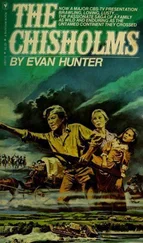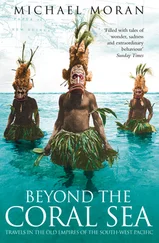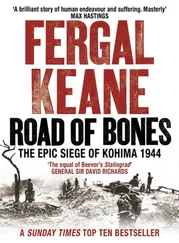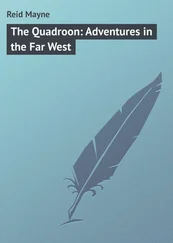But it also seems clear that in this independent era there was little conflict between the tribe’s stated values and their material ambitions, thanks to a luxury of space — in the years just prior to the arrival of the white man the Nimiipuu are estimated to have numbered from four to six thousand people, enjoying near-exclusive occupation of around thirteen million acres of land. The defining characteristic of the Nimiipuu, in terms of their environmental impact, was simple lack of numbers — they were at a point on the curve where their actions, though crucial to their immediate locality and their own survival, were not likely to shatter entire ecosystems. As a local anthropologist put it to me: ‘It doesn’t really matter if you run a few hundred buffalo off a cliff, if you only do it once a year.’
Then, of course, everything would change. And to question the sincerity of a culture’s core values because they were not too severely tested until you came along seems churlish, at best — particularly as you arrived uninvited.

For the Nimiipuu the first impact of the European invasion of the Americas was largely a benign one — the reintroduction of the horse. Despite their prominence in the mythical West, horses had in fact disappeared from the continent at the same time the first spear point had swept through it, the attractions of protein outweighing load-bearing capacity in those early hunters’ estimation.
Columbus then brought horses to Hispaniola on his second Atlantic crossing, the Spanish left many behind on their subsequent murderous ramblings through Mexico, and by the early eighteenth century the burgeoning mustang herds, and European concepts of domesticating and riding horses, had reached the Columbia Plateau. The ever-adaptable Nimiipuu rapidly became expert riders and breeders, developing a herd numbered in thousands, greatly expanding the range of their endeavours. Larger groups could now travel further afield in search of game and trade, over the rough crossing routes of the Bitterroot Mountains into modern-day Montana, onwards to the wide open Big Hole Valley, still further east to the eerie, steaming landscapes of Yellowstone, north into the great plains of the buffalo tribes. New skills were learned, such as covering lodges in buffalo hides, friendships and intermarrying relationships were strengthened, for example with the Salish people to the east, and military rivalries sprang up with once-distant enemies, now rivals for the bounty of the hunting grounds. The arrival of the horse, the rifle and the East Coast Pilgrims had greatly destabilized Native America’s already fractious territorial arrangements, with many tribes dominoing west, while others expanded rapidly with their new tools of war, and as the Nimiipuu fought their share of conflicts with raiders and land-grabbers the tribe’s warrior culture developed rapidly. Bravery in battle had been a rich source of male identity in pedestrian times, but now that the Nimiipuu were a horse people, the ceremonies of war grew more regular, the traditions of scalp-taking and counting coups (getting close enough to an opponent to touch him, then retreating unharmed) became more ingrained across the Northwest and the prestige of conflict grew ever more alluring to the young and the fearless. The Nimiipuu became proud of their reputation as one of the toughest and smartest martial opponents in the region, sharpening the tactics of warfare and horsemanship that they would later rely on for their very survival.
Around the end of the eighteenth century, during an otherwise unremarkable skirmish in the eastern buffalo fields, a Nimiipuu woman was captured by a raiding tribe and taken north to Canada, where she encountered proof of a long-rumoured apparition — white faces, thick beards and strong medicine. She was well cared for by the trappers and fur traders she encountered, and, fatefully, returned to her village by 1805. Without her elderly recollection that white people were kind and harmless, the seven half-starved men who stumbled into a Nimiipuu camas-gathering camp in the autumn of that year might well have met the fate that many of the village leaders prescribed for them — a swift dispatch. The Nez Perce are not the only tribe in the American West to recall, with bleak humour, that life might have been a great deal simpler if they’d only decided to fatally hinder the Lewis and Clark expedition, rather than graciously help it.
William Clark and Meriwether Lewis had been challenged by President Thomas Jefferson to find a route from the Mississippi to the Pacific Ocean, ostensibly to uncover the geographical and biological wonders of the continent but, in reality, to open up territory to the fur trade and establish nautical links with Asia. Twenty-eight years after achieving independence from Britain, the United States was now engaged in an old-fashioned mercantile struggle with the mother country for control of its hinterland’s resources, and packing the West with fur trappers who had an easy sales route to the Orient seemed the best way to squeeze the giant British trading enterprise the Hudson’s Bay Company (an enemy larger and better resourced than the juvenile US government) up into Canada, or even into the sea. Jefferson had struck a mighty blow against the British in 1803 when Napoleon had sold him 800,000 square miles of land between the Mississippi and the Rockies for $15 million. When Lewis and Clark’s Corps of Discovery expedition set off west in May 1804 it had thus become a much grander, nation-building enterprise — the United States had just more than doubled in size, without a clue what resources, or peoples, most of its new hinterland possessed.
The Corps of Discovery’s stumbling progress towards the Pacific has, in many conflicting ways, become a defining image in the creation of America. The heroism, fortitude and sheer bloody-mindedness of the party are beyond dispute, as they paddled against the current of the Missouri for five months, saw out a blinding sub-Arctic winter on its banks, crossed the armour-plated spine of the Rocky Mountains, coped with rattlesnake bites, grizzly bear attacks, dysentery, malaria, starvation and more. Equally certain is that the western wilderness would have eaten them alive and spat out the bones without the help, sustenance and advice of the many Native peoples they encountered on the way, including the Mandan, Dakota, Oto and Shoshone, a fact Lewis and Clark often acknowledged in their famous travel journals. But the exchange of gifts with these peoples, the smoking of pipes, the borrowing of guides and horses, the cheerful demonstrations of such European innovations as the magnet and the magnifying glass, obscured the plain truth -Lewis and Clark were casing the joint.
By 1804 Jefferson had persuaded America’s leaders that the salvation of their new country would be space. A generous excess of land would be capable of dissipating the increasingly crowded and industrialized eastern seaboard into a simple, spread out and morally upstanding agrarian culture, preventing the decline into European-style fan-fluttering dilettantism with a national backbone of honest, hard-working farming families. ‘The small land holders are the most precious part of the state,’ he declared, and the greater the area these people could occupy, the greater their bracing influence on America’s character. The wealth of evidence that Lewis and Clark would secure, that the lands both within and beyond the new American territories were performing precisely that role already — but for someone else -was never going to act as a deterrent to expansion.
His outriders were themselves on the brink of death (not for the first time) when they reached the Nimiipuu. William Clark and six other men had gone ahead of the main expedition party to search for the Lolo Trail, an ancient route over the sprawling massif of the Bitterroot Mountains that would hopefully lead them onto the Columbia River and a downstream drift to the coast. The expedition’s previous babysitters, the Shoshone people, had warned them that the path was rough, obscured by tree fall and landslides, and sorely lacking in edible game, but Clark was undeterred. Eleven days later his men were eating their dogs, horses, even candles; they were ravaged by sickness, cold and exhaustion, and facing defeat at the hands of what one member described as ‘the most terrible mountains I ever beheld’. As they fell out of the forest and onto the camas grounds of the Wieppe Prairie, it is perhaps understandable that the Nimiipuu who found them and took them into camp concluded, from their unkempt beards, ravenous appetites and pungent lack of hygiene, that these visitors were half man, half dog.
Читать дальше













